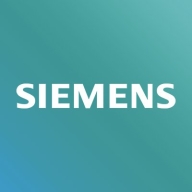

OpenText ALM/Quality Center and Polarion ALM operate in the application lifecycle management market. Each product delivers unique advantages, though both excel in traceability and integration abilities. OpenText ALM/Quality Center seems slightly favored in scalability and data integrity, appealing to larger organizations.
Features: OpenText ALM/Quality Center offers robust traceability, high customization capabilities, and seamless integration with various automation tools. It maintains high data integrity and is highly scalable, making it ideal for large enterprises. Polarion ALM stands out for its all-in-one platform that manages requirements, coding, testing, and release processes with strong tool integrations. It is well-suited for highly regulated environments.
Room for Improvement: OpenText ALM/Quality Center faces criticism for high licensing costs, complex setup, limited browser support, and a lack of agile methodology support. Users desire a more user-friendly interface and enhanced reporting features. Polarion ALM could improve by refining its user interface and enhancing integration with external tools. Additional plugin costs are noted as a drawback for expanding functionalities.
Ease of Deployment and Customer Service: Both OpenText ALM/Quality Center and Polarion ALM are available as on-premises and cloud deployments. OpenText ALM/Quality Center users report varied customer service experiences, some favoring third-party support due to inconsistency depending on location and support tier. Polarion ALM is praised for responsive customer service, though advanced support incurs extra costs.
Pricing and ROI: Pricing for OpenText ALM/Quality Center is considered high, limiting its appeal for smaller enterprises. However, its strong ROI for large projects stems from process streamlining and efficiency improvements. Polarion ALM, while considered expensive, is valued in enterprises needing robust compliance and traceability. Additional plugin expenses are noted for function expansion.


The world’s first 100% browser-based ALM enterprise solution, which enables seamless collaboration across disparate teams, multi-directionally linked work items, full traceability, accelerated productivity and automated proof of compliance.
We monitor all Application Lifecycle Management (ALM) Suites reviews to prevent fraudulent reviews and keep review quality high. We do not post reviews by company employees or direct competitors. We validate each review for authenticity via cross-reference with LinkedIn, and personal follow-up with the reviewer when necessary.